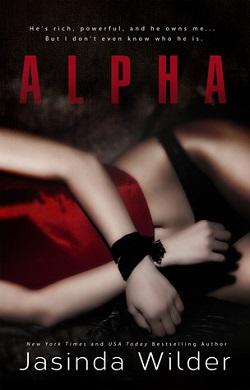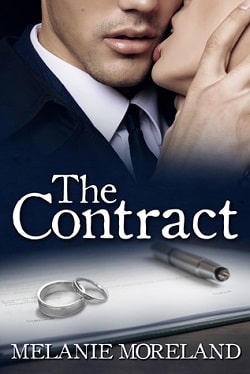Page 9 of Killer on the First Page
Chapter Three
Legend of the Lost Manuscript
There was somethingoffabout the reading room. Miranda could feel it every time she entered. An enigma in its own right, the narrow anteroom was across the hall from the former dining area. Too big to be a larder, too small to be a children’s room, and too closed off to be used for social functions. Edgar had dubbed it a “reading nook” and had rolled in a wooden swivel chair and side table, along with a standing lamp and escritoire desk, and some mismatched shelves that he filled with overstock. A heavy door closed it in.
He assumed this narrow room had served some purpose originally. But what exactly? Local history books contained black-and-white photographs of the building’s interior as a private abode: dour men in celluloid collars and women equally dour in their hoop skirts, looking ill at ease. Handlebar mustaches and brooches. A merchant family. A shipping magnate. A boarding house. The many iterations of the home on Beacon Hill before it became a bookstore were well documented. The building’s dining room and main hall appeared often in these photographs, but the more functional spaces were rarely included: the scullery and servants’ quarters, for example. Which is what Edgar’s reading room was eventually identified as: thestaff’sdining area, where the char maids and butlers could hide out, muttering darkly about the lords of industry and plotting their revenge.
Edgar had been informed of the original purpose of this room only after posting detailed blueprints online with a note:Owner of a mystery bookstore looking for help solving a mystery. What was this room used for?He’d circled it on the architectural floor plans with the boiler room below.Maybe coal storage? Did people store coal on the main floor? Or was coal only ever piled in the basement?Several historians had pored over these plans online and had pronounced the room’s original purpose. But calling it “the former servants’ dining hall” didn’t have the literary cachet of a designated “reading room,” and thus a reading room it became and a reading room it stayed, a bibliophile’s hideaway and the one place in the bookstore Owen McCune was not allowed into—for obvious reasons. One didn’t want him pawing his oily hands through the books in there.
Along one wall of the reading room Edgar had placed an antique cabinet with etched-glass doors, a cabinet that acted as the reliquary for those rare and valuable collectibles as sometimes turned up in the book trade. First-edition Agatha Christies, limited-edition Gillian Flynns with the alternate ending (it was all a misunderstanding and the girl came back), a Sue Grafton with a typo in the title (B is for Burger), a leather-bound Highsmith, and even a pop-up version ofThe Bone Parade.
A narrow room with a door at one end and a window on the other. The window didn’t open, but the transom above it did, those slanting panes of glass that were used to circulate air before the invention of central cooling. A wrought-iron radiator squatted directly below the window.
With bookshelves along one wall and the “rarities cabinet” on the other, and the swivel chair and standing lamp squeezed in between,the room was both cozy and constricted, both comforting and claustrophobic. A secure room with one of the few working locks in the bookstore. Not that Edgar ever used the old-fashioned brass key to the room. He kept that hanging on a hook in the kitchen. As for the glass cabinet, it had a small decorative key of its own.
When Edgar first posted the layout of the room, one wag had pinged back,When an author describes a room in great detail, that’s usually where the murder occurs.When he’d shown Miranda this comment with a laugh, she’d gone pale, like she’d been given a premonition of what was to come.
Edgar began stacking the John D. Ross hardcovers on various surfaces in the reading room: the end table, the shelves, the small desk. He was as giddy as a kid at Christmas.
“What a windfall! I’ll keep the hardcover first editions in here until they can be properly cataloged and evaluated. Any rarities we come across, we’ll secure in the cabinet.”
They would sit along other rare birds that Edgar loved to display but was loath to sell, even if they would have fetched him the highest prices. One didn’t enter the book trade to make money, after all.
“As the legendary New York bookseller Alfred Goldsmith so famously put it,” said Edgar, “the book business is a very pleasant way of making very little money.”
Crowded in with Andrew and Edgar in the reading room, Miranda considered the strange novel with the mauve cover. “No author photo. Why would you ever publish a book without your photo prominently displayed?” As an actor, it was unfathomable, like starring in a play without posting your 8×10 glossy headshot in the lobby. “How Precious the Rain, How Sad the Sun. I wonder who this Gertrude person is.”
“It’s just a book, Miranda. Not everything is a clue.”
“Perhaps...” That was the problem with clues; they only looked like clues after the fact. “Still, I would think we should lock this one in the cabinet. To be safe.”
“Sure. You do that. I’ll return it to Helen later. It doesn’t go with the rest of the collection anyway.”
Miranda turned the small key that was in the cabinet’s lock and placed the slim volume inside. But the treasure hunt was not yet over.
From behind her she heard Edgar say, “Hello! What do we have here?”
At the bottom of the last box, under the last of the hardcovers...
“It’s a manuscript,” said Edgar. He pulled it out. A heavy block of pages, bound by a rubber band, it had a cover page that had been typed on an actual typewriter. “A Black Orchid to End With, by John D. Ross. Huh.”
“I don’t remember that one,” said Andrew.
A gleam came to Miranda’s eye. “Wait! It’s like that episode ofPastor Fran, ‘The Case of the Austere Author.’ Remember? The victim managed to touch-type his murderer’s name as he lay slumped across his desk, dying. But his fingers had slipped down and were on the wrong row of the typewriter keys—I mean, hehadbeen hit in the head by a spiked flail, so it was perhaps understandable—and instead of typing the name ‘SAM,’ he typed ‘WQJ’ or some such. Do you remember that episode?”
“I wrote it, so, yeah, I remember it. I named the villains for studio execs. It was a metaphor for how they meddled with my scripts.”
“And?” she asked.
“They meddled with that one, too.”
“In fairness,” said Miranda, “that is in their job description:Producer slash meddler. Maybe the manuscript you’re holding is the late John D. Ross’s final novel, the one he was working when he died!”
“Could be, except it’s dated ten years ago.”
Traditionally, a manuscript cover page included four key elements: the title, the author’s name, the word count, and the date it was completed. This one’s date was from a decade ago.
“Hefty, too.” Edgar turned back the top corner of the last page without taking off the rubber band. “It’s 298 pages. If itisa lost manuscript, it definitely needs to be returned to Helen. This belongs in a public archive or on a publisher’s desk, not here.”















